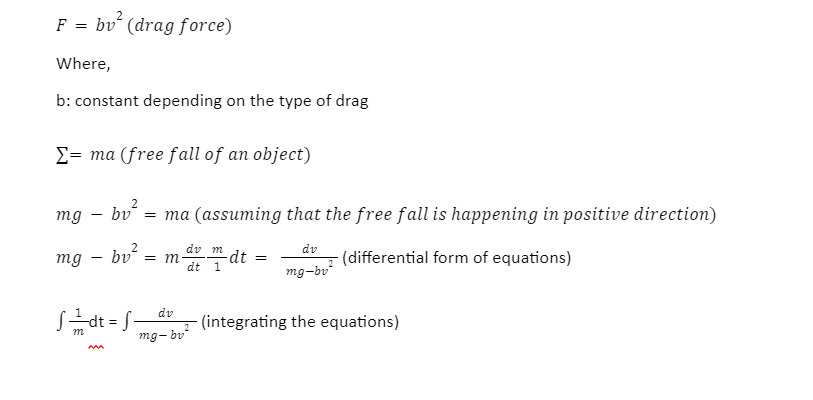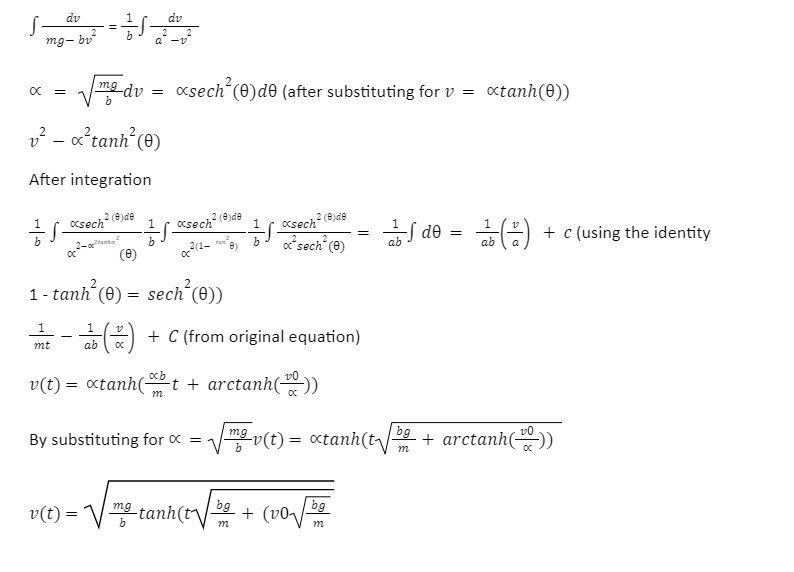The greatest velocity attained by an object as this descends through a gas or fluid is called terminal velocity. For example, air, but it also applies to all liquids. When an object is exposed to a resistance that grows with velocity and equals the driving force, it is said to be in terminal force. An object travelling downwards at a faster rate than terminal velocity will ultimately slow down to match the terminal velocity.
When a person leaps out from a plane, for example, they acquire speed and move quicker. The reason for this is that they are accelerating towards the earth due to the weight force. As previously stated, the drag force increases as the speed increases. The same can be said for any kind of friction. As a result, the more the SkyDrive accelerates the more the drag force he will generate. It continues until a skydiver’s net force is zero, indicating that he is no longer accelerating. This indicates that he has attained his maximum speed. He’d keep going at this speed until he opened his parachute.
Drag Force
A drag Force is a resistive force that acts in the opposite direction of an object’s relative motion in relation to a fluid. It differs from other resistive forces in that it is dependent on the object’s velocity as it falls through the fluid. The term “air resistance” or “fluid resistance” is widely used to describe it. Drag coefficient is a dimensionless number that measures all the intricacies of resistive force relationships.
Formula
Whenever an object is falling due to gravity or under the effect of a steady driving force. This force is subjected to drag or resistance, which rises with velocity. At some point, the drag force matches the driving force, and the vehicle reaches its maximum speed. The “terminal velocity” is the motion’s final, constant velocity. The skydivers have popularised this word.
The drag force that acts on the moving thing increases as that of the speed of the object increases. It also relies on the substance through which it passes, such as air or water. This drag force of resistance would eventually match the gravitational attraction on the object at a certain speed.
In fluid mechanics, an item must keep a constant pace against the force exerted through which it is flowing to reach its terminal velocity.
Terminal velocity is represented mathematically as:
Vt =√(2mg/pACd)
Where,
vt is the terminal velocity, m is the mass of the falling object, g is gravity’s acceleration, Cd is the drag coefficient, D is the density of the fluid by which the object is falling, and A is the projected area.p is the density of medium through object is falling .
Derivation of the Mathematical Representation
Deriving terminal velocity using mathematical terms according to the drag equation as follows:


Conclusion
When an object falls from a height, it accelerates until it achieves terminal velocity. When an object is compelled to go faster, its terminal velocity slows down until it reaches its constant velocity. When the speed of a moving item stops growing or decreasing and the acceleration or deceleration of the object is zero, it is said to be at terminal velocity.
 Profile
Profile Settings
Settings Refer your friends
Refer your friends Sign out
Sign out













